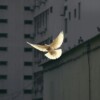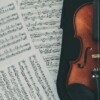“If only it were all so simple! If only there were evil people somewhere insidiously committing evil deeds, and it were necessary only to separate them from the rest of us and destroy them. But the line dividing good and evil cuts through the heart of every human being. And who is willing to destroy a piece of his own heart?”1
—Alexander Solzhenitsyn, The Gulag Archipelago
I had heard Solzhenitsyn’s metaphor many times from the pulpit and in print before I read the (condensed) version of his own account. Out of context, it’s a vivid reminder to “Know thyself!,” as Solzhenitsyn himself writes a few pages after his second use of this metaphor.2 But in context, I heard much more than self-introspection.
To be precise, I should say “in contexts,” because Solzhenitsyn uses this metaphor twice in two different ways. I sense a scientific color to the metaphor, because around it are several allusions to physics, chemistry, and math. At different times of life, Solzhenitsyn thought as a scientist — he was first a student, and later a teacher, of physical science and math. So I envision this more as a line on a graph, an isotherm, or a line on a phase diagram, than a line on an artist’s sketchpad or a boundary on a map.
The scientific slant of Solzhenitsyn’s mind is most evident in his life immediately before and after the events described in The Gulag Archipelago. As a student at Rostov State University In the late 1930s, he studied physics, mathematics, and chemistry. During World War II, he triangulated enemy positions from the sound of their gunfire to win battles for the Red Army. Then he spent eight years in Soviet prisons and camps, which ended when he was exiled to Kazakhstan in the mid-1950s. In exile, he worked as a science teacher of physics and math, which “helped to ease my existence and made it possible for me to write.”3 The comfort he received from teaching allowed space for him to compose his harrowing history of imprisonment.
Science wasn’t just his occasional job, but it shaped his habits and thinking. I see Solzhenitsyn’s scientific bent in his precise memory for detail, in his scientific detachment in the face of the horrors of torture, and in his drive to move beyond appearances to the truth of a matter. He even uses a scientific metaphor to explain one of my main questions as a reader: How could he ever survive such Hell on earth? Solzhenitsyn says he had a “secret sensor relay, for whose creation I deserved not the least bit of credit.”4
I see this “sensor relay” in Solzhenitsyn’s account of when, as a student, he refused Soviet army and air force recruiters three times. He had felt “a sense of revulsion, repudiation. I don’t want to. It makes me feel sick. Do what you want without me; I want no part of it.”5 He used a scientific term where other authors would use spiritual terms like conscience.
This same intuitive gift of discernment was with Solzhenitsyn throughout his times of imprisonment and exile. “During all those seventeen years I recklessly revealed myself to dozens of people—and didn’t make a misstep even once.”6 Solzhenitsyn’s sensor gave “consistently unfailing” reads on who was trustworthy and who was a State informer (a “nasedka”). Some of this is literally survivor bias, but even so, I have no doubt that the world owes Solzhenitsyn’s literature to this sensor, his ability to trust the right people.7
Solzhenitsyn describes his sensor a few pages after the quote that began this essay, which is the first time he describes the “line dividing good and evil.” In its first context, Solzhenitsyn’s metaphorical line is as razor-sharp as a phase transition from gas to liquid:
Physics is aware of phenomena which occur only at threshold magnitudes, which do not exist at all until a certain threshold encoded by and known to nature has been crossed. … You can cool oxygen to 100 degrees below zero Centigrade and exert as much pressure as you want; it does not yield, but remains a gas. But as soon as minus 183 degrees is reached, it liquefies and begins to flow. … Evidently evildoing also has a threshold magnitude … when, through the density of evil actions, the result either of their own extreme degree or of the absoluteness of his power, he suddenly crosses that threshold, he has left humanity behind, and without, perhaps, the possibility of return.8
This isn’t “know thyself” — it’s “watch out!” It’s the parable of the wheat and the tares, and the great gulf between Lazarus and the rich man. Solzhenitsyn’s captors let the line dividing good and evil capture and chill their souls as ice-cold as the lowest level of Dante’s Inferno. They became like beasts (Psalm 73:22). Sin was crouching at the door, and they were overcome.
The second time Solzhenitsyn describes the line dividing good and evil, he also includes scientific metaphors – even another one involving oxygen. We have moved from Part I: The Prison Industry to Part IV: The Soul and Barbed Wire, which is introduced with the epigraph “Behold, I shew you a mystery; we shall not all sleep, but we shall all be changed.” (I Corinthians 15:5) This gives hope that things will change in this part. Here the metaphor of the line is discussed in the context of Solzhenitsyn’s spiritual conversion:
It was only when I lay there on rotting prison straw that I sensed within myself the first stirrings of good. Gradually it was disclosed to me that the line separating good and evil passes … through all human hearts. This line shifts. Inside us, it oscillates with the years. And even within hearts overwhelmed by evil, one small bridgehead of good is retained. And even in the best of all hearts, there remains … an un-uprooted small corner of evil.9
Here the line is a battle line shifting back and forth. Even in intense suffering, hearts can thaw, or as Solzhenitsyn’s scientific mind put it, they can oxidize:
Yes, the camps were calculated and intended to corrupt. But this didn’t mean that they succeeded in crushing everyone. Just as in nature the process of oxidation never occurs without an accompanying reduction (one substance oxidizes while at the same time another reduces), so in camp, too (and everywhere in life), there is no corruption without ascent. They exist alongside one another.10
To illustrate ascent, Solzhenitsyn tells of the implacable endurance of a soil scientist who chose honesty in every small thing. This man showed that “In camp, existence did not determine consciousness, but just the opposite: consciousness and steadfast faith in the human essence decided whether you became an animal or remained a human being.”11
I continue to struggle with the comment that directly precipitated Solzhenitsyn’s conversion. Another prisoner told him “there is no punishment that comes to us in this life on earth which is undeserved.”12 This led Solzhenitsyn to ponder the evil in his own heart and accept even the Gulag itself as an instrument of purification, a sort of real-life purgatory. I don’t understand or fully accept it – this doesn’t seem remotely proportionate or just — but I can only report what he wrote, that God used even that horrible circumstance for good.
These stories of conversion are real-life alchemy, of leaden souls turned to gold. In some incomprehensible way, God shifted the line of good and evil in Solzhenitsyn’s heart, even when he was immersed the Gulag’s worst evil. The Gulag is gone but the transformations continue. In the twenty-first century, after compounded family tragedies, the musician Nick Cave used a scientific metaphor to tell how God worked through his grieving:
Grief, like love, is a mess. Grief manifests as awesome and Godlike. It was not about “acceptance,” which suggests a kind of ultimate returning to business as usual, rather it is an obliterating force that requires a kind of transmutation of being, where we turn from one thing into another thing. The experience of losing my two sons was a reordering of one’s essential being. Ultimately, if we are lucky, we stop focusing on our own wounds and look to the wounds of the world.13
The stakes are high and so much is lost along the way – but the God for whom all things are possible is in the business of “transmutation of being,” converting what was meant for evil into an eternal weight of glory. There is a greater distinction between good and evil than between lead and gold, and Solzhenitsyn’s ability to sense that distinction meant the difference between life and death, accomplishing an alchemical transformation in his soul.
Footnotes
- Aleksandr Solzhenitsyn, The Gulag Archipelago 1918-56: An Experiment in Literary Investigation translated by Thomas P. Whitney and Harry Willetts and abridged by Edward E. Ericson, Jr. (Vintage Arrow, 2018), 100.
- Solzhenitsyn, The Gulag Archipelago, 328.
- Hamish Johnston, “Breaking boundaries: how erstwhile physics teacher Alexandr Solzhenitsyn won the Nobel Prize for Literature,” Physics World Culture, History and Society Blog, September 30, 2022. https://physicsworld.com/a/breaking-boundaries-how-erstwhile-physics-teacher-alexandr-solzhenitsyn-won-the-nobel-prize-for-literature/
- Solzhenitsyn, The Gulag Archipelago, 113
- Solzhenitsyn, The Gulag Archipelago,100.
- Solzhenitsyn comments that this “secret sensor relay” can be impeded: “I have never read about this trait anywhere, and I mention it here for those interested in psychology. It seems to me that such spiritual sensors exist in many of us, but because we live in too technological and rational an age, we neglect this miracle and don’t allow it to develop.” (The Gulag Archipelago, 112)
- Others had similar senses that they used for evil. Solzhenitsyn wrote that Stalin had a “dark and special talent, his main psychological bent and his life’s achievement: to see people’s weaknesses on the lowest plane of being.” (The Gulag Archipelago, 148) If discernment is a gift, it is not given in all times and places. Solzhenitsyn’s own sensor appears to have failed late in life, when he reportedly praised Vladimir Putin in 2008. (Luke Harding. “WikiLeaks cables: Solzhenitsyn praise for Vladimir Putin.” The Guardian, December 2, 2010.)
- Solzhenitsyn, The Gulag Archipelago, 103.
- Solzhenitsyn, The Gulag Archipelago, 327.
- Solzhenitsyn, The Gulag Archipelago, 334.
- Solzhenitsyn, The Gulag Archipelago, 333, quoting M. A. Voichenko.
- Solzhenitsyn, The Gulag Archipelago, 326.
- Kory Grow, “Nick Cave on Why the ‘Kubler-Ross’ Grief Model is ‘Bullsh-t’” Rolling Stone, September 6, 2023. https://www.rollingstone.com/music/music-features/nick-cave-faith-hope-carnage-interview-1234827834/
























Thank you for the insight and encouragement of this article.
I read your post this morning. It resonated with some of my thinking about the spiritual charism of discernment. Corrie Ten Boom reports something similar in being able to trust people working in the underground. After the war, she noticed that she had become careless in confiding information. In her case, the gift of discernment was not permanent but for a particular moment in time.